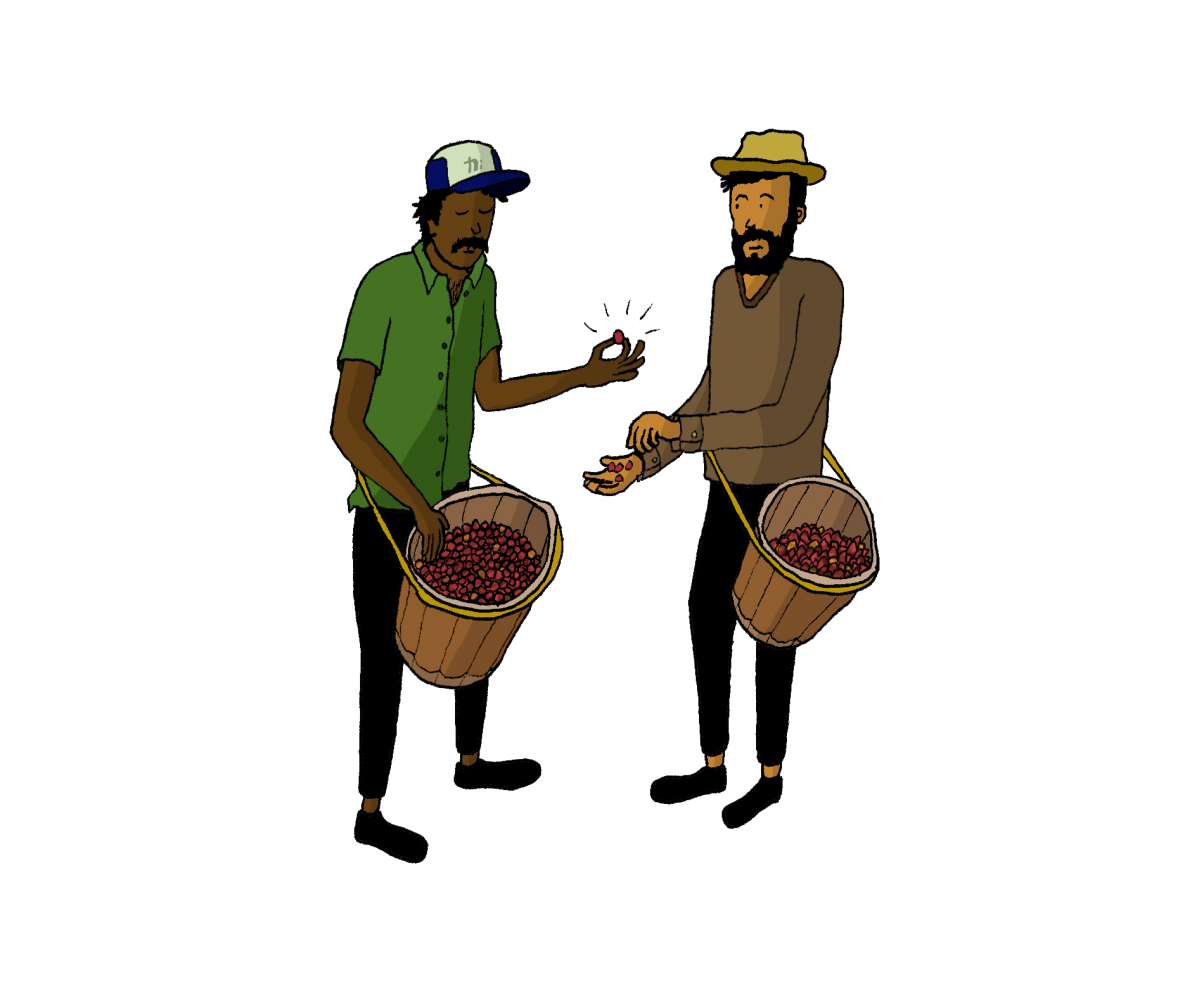Washed / wet process — After being harvested, the coffee cherries are brought to a processing mill, where they are soaked in water. The unripe or overly matured cherries immediately float and they are prevented from getting to the next stage of the process. This eliminates a lot of the defective cherries.
The ripe cherries will then be put into a de-pulping machine, which separates the cherries from the beans. At this point, the beans are still covered in their parchment and fruit mucilage. It is important to get rid of any mucilage. To do this, the beans are fermented in fermentation tanks for 24-36 hours, until the mucilage can be easily washed off. When the beans are clean, they are taken in their parchments to dry under the sun.
This method preserves more acidity than the natural process and produces more consistency in the final flavour profile. However, the washed process is a lot more complicated. It consumes more water and there is a higher margin of error.
Natural / Dry process — After the coffee cherries have been harvested, they are spread out in the sun to dry on large patios or raised drying beds. The cherries are turned occasionally to ensure even drying. When the coffee is fully dried, it is rested inside the fruit and then peeled (hulled) to remove all parchment and husk that covers the beans. After this, the beans are ready for shipment.
With the natural process, it is hard to ensure all coffee dries at the same rate. Due to this, there is higher risk of inconsistency. Generally, naturally processed coffees will have lower acidity and a heavier body. The fruit drying on the beans, plus the sun hitting the them directly, changes the final flavour profile.
Pulp natural process — The pulp natural process is similar to the washed process in that the cherries are brought to the processing mill and de-pulped in a pulping machine.
After this, the de-pulped coffee then skips the fermentation process and is taken straight out to dry in the sun with the parchment and mucilage still intact. The drying of coffee processed in this way is very delicate. The beans must be turned and raked very often to avoid fermentation and rot.
During this process, the mucilage dries into the bean affecting the final flavour profile of the coffee. This process can also be referred to as ‘semi washed’. Pulp natural coffees can have more body and lower acidity than the washed process. They are generally cleaner and more uniform than natural processed coffee.

